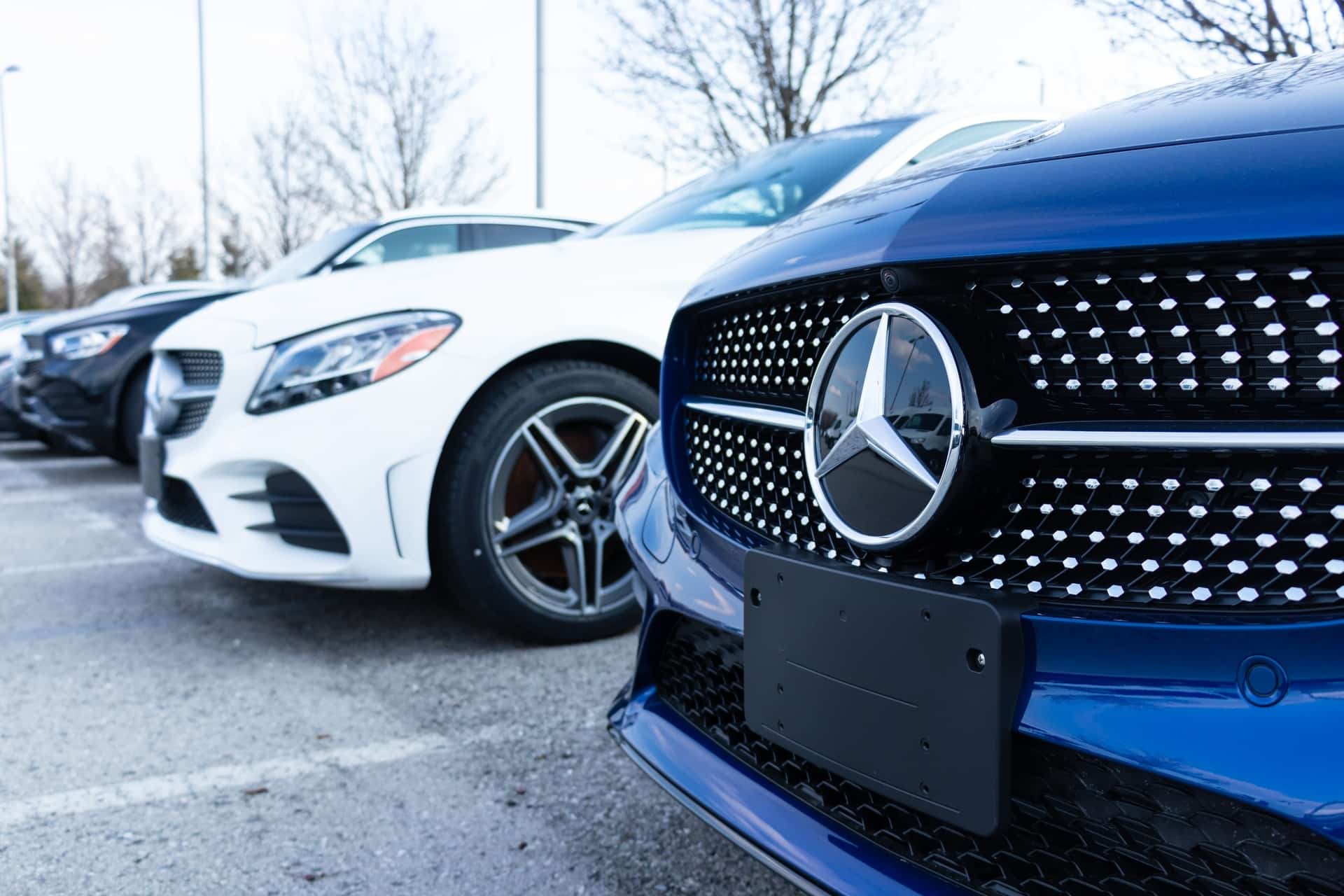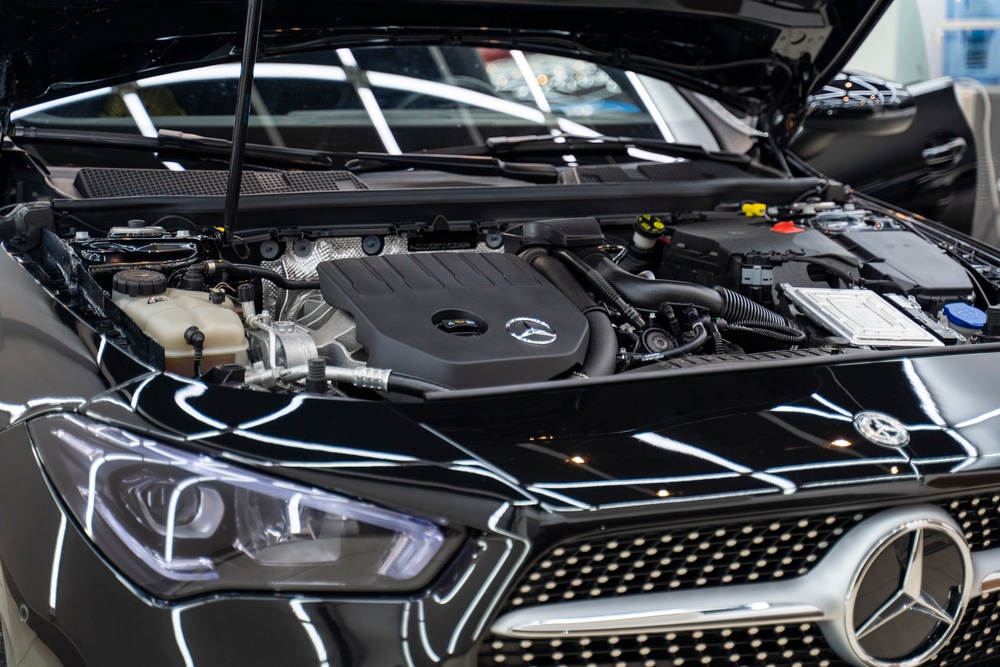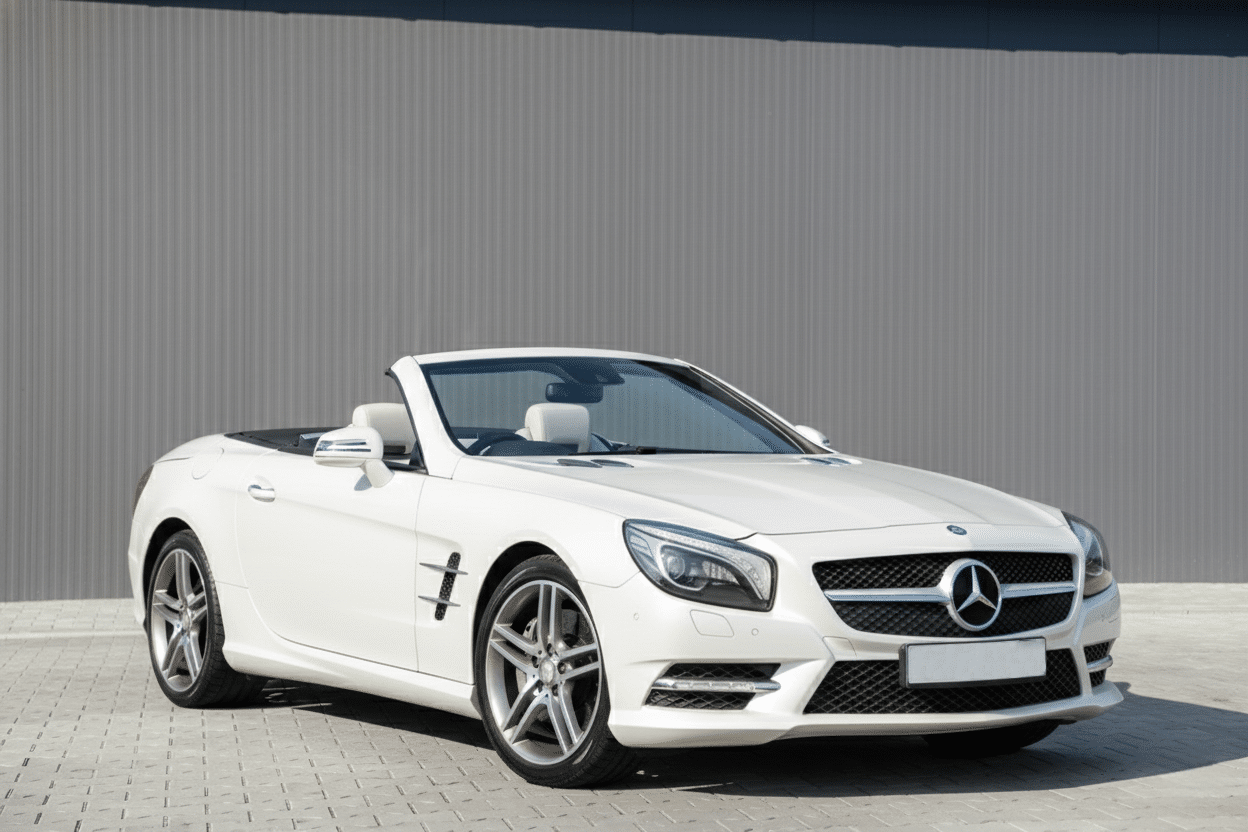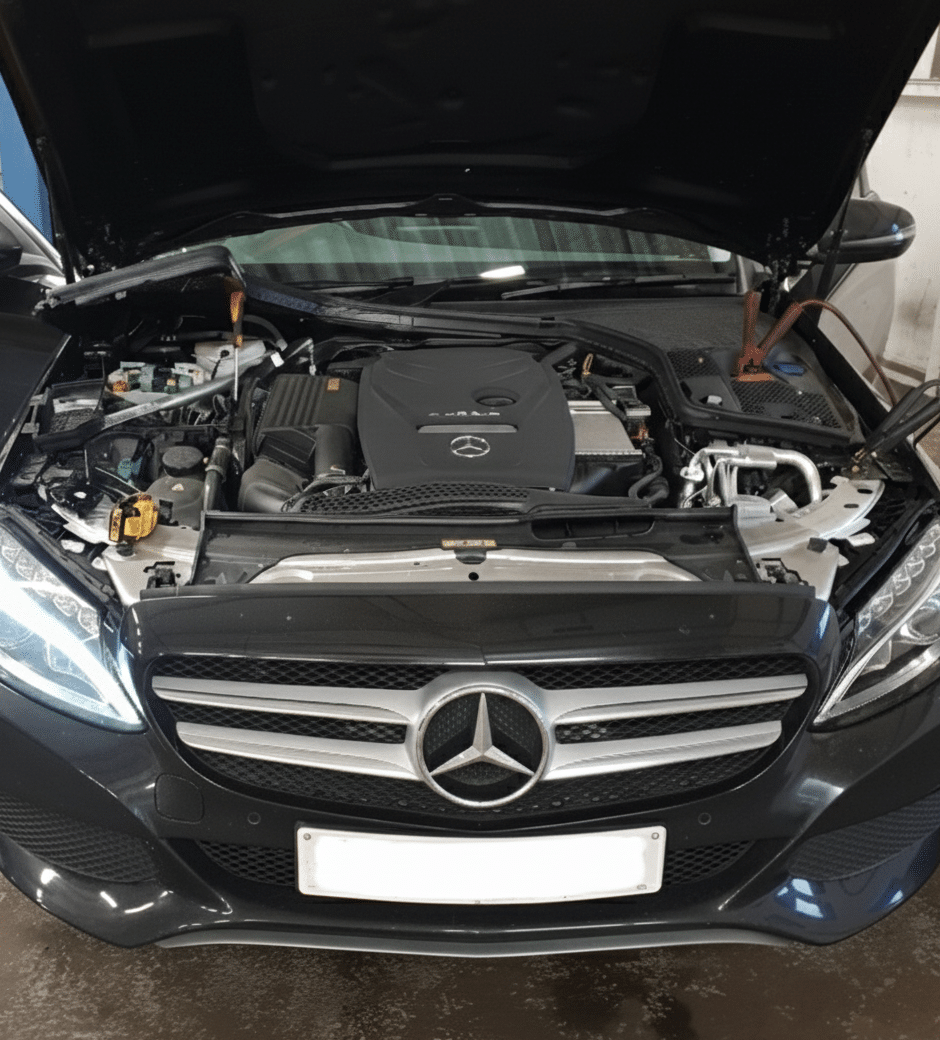Mercedes Correct Tyre Pressure
One of the easier parts of car maintenance is checking your tyre pressures. However it is so often overlooked. How do I know which is the correct tyre pressure for my Mercedes? What else should I look out for when inspecting and maintaining my tyres? We will cover all of these and more in this article.

The Importance of Maintaining Correct Tyre Pressure in Your Mercedes-Benz
Tyre pressures affect handling, fuel economy, comfort, and longevity of your tyres. It is therefore vital that they are correct to ensure smooth operation of your Mercedes Benz vehicle.
When driving a Mercedes Benz vehicle with under-inflated tyres, it can cause faster wear and tear, reducing the tyre’s endurance and increasing the risk of a sudden puncture. This can also result in increased fuel consumption due to increased roll resistance. Additionally, if a tyre is only inflated to 30% of the recommended pressure, it can increase the risk of hydroplaning, which can be dangerous while driving on wet roads.
Improperly inflated tyres can cause uneven wear on the centre of the tread on your Mercedes Benz vehicle’s tyres, which can affect handling and lead to decreased traction. This damage can cause the tyres to react less effectively to road hazards, making your driving experience less enjoyable. Keep your Mercedes running smoothly by ensuring your tyres are properly inflated.
If you are ever unsure about checking and topping up your Mercedes tyre pressures then head to Shires Garage. Our expert technicians are proud to serve Mercedes Benz owners in the local Taunton area.
Recommended Tyre Pressures for Your Mercedes-Benz and Where to Find Them

If you own a Mercedes vehicle, it’s important to ensure you’re using the correct tyre pressure for your specific make and model. Some winter tyres may require different pressure levels, as suggested by the manufacturer.
Mercedes vehicles typically have higher tyre pressures in the front than the rear, as this helps to balance the weight distribution and compensate for the added weight of the engine and transmission, particularly on front-wheel-drive models.
To find the right tyre pressure for your Mercedes, refer to your vehicle’s maintenance guide or check the sticker located on the inside of the front door or fuel cap. If you need further assistance, don’t hesitate to contact Shires Garage, your local Mercedes specialist, for expert advice and support.
How to Check Tyre Pressure in Your Mercedes-Benz and Essential Tools You’ll Need
In modern vehicles, the Mercedes-Benz Tyre Pressure Monitoring System (TPMS) is an advanced tool that can alert you if your tyre pressure is low. It even allows you to check each tyre’s pressure through your instrument cluster.
To check your Mercedes-Benz tyre pressure, turn on your vehicle, access the “Service” menu using the left or right arrow keys on your steering wheel, select “Tyre Pressure” using the up or down arrow keys, and then hit “OK” to view the tyre pressure on each tyre.
If your vehicle does not have this feature, or if you prefer the traditional way of measuring your Mercedes Tyre pressures, then you need to invest in a pressure gauge. First, remove the valve cap from the tyre you want to check. Place the pressure gauge onto the valve stem and press down firmly until you get a reading.
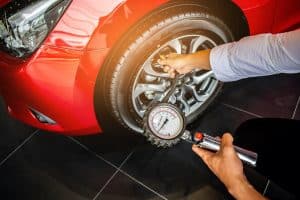
Compare the reading to the recommended pressure in your Mercedes vehicle’s owner manual or on the sticker located on the inside of the driver’s door. If the reading is lower than the recommended pressure, add air until you reach the correct pressure. If the reading is too high, release some air until you reach the recommended pressure.
Remember that there are many ways that can go wrong when measuring tyre pressures, such as using an inaccurate gauge or measuring the pressure when the tyres are too hot or cold. If you’re ever unsure, seek expert help from a Mercedes specialist garage like Shires Garage to ensure that your vehicle’s tyres are properly inflated for optimal performance and safety.
Can You Rely on the Tyre Pressure Monitoring System in Your Mercedes-Benz?
Generally you can rely on your Mercedes Benz Tyre Pressure Monitoring System (TPMS) to give you an accurate reading for your tyres pressures. However, the TPMS needs to be properly calibrated and functioning. In order to calibrate your TPMS, take it to a specialist Garage like us. At Shires Garage, we are experts in servicing and maintaining your Mercedes Benz. If you are unsure that your tyre pressure monitor system is functioning, at Shires Garage, we can take a look and get your pressures to the recommended level quickly for minimal disruption to your otherwise busy life.
Adjusting Tyre Pressure Based on Weather and Road Conditions: What You Need to Know
Weather and temperature changes can impact the air pressure in your Mercedes Benz tyres. Warm weather increases tyre pressure while cooler weather decreases it. Tyre pressure is measured in pounds per square inch (PSI) or Bar. To find out the recommended tyre pressures, as mentioned before, it will usually be displayed on a plate or sticker inside your car door or inside your owner’s manual.
As tyres are used throughout the day, the pressure can change. Lower pressure can increase fuel consumption and cause heat build-up in the rubber, reducing the tyre’s lifespan. Driving on rough, dry roads at high speeds in the sun can increase pressure by up to 10 PSI. To reduce the effects of temperature changes, check your tyre pressure every month. Seek expert help from Shires Garage if you are ever unsure about your tyres’ condition or pressures.
7 Ways to Maintain Your Mercedes-Benz Tyres and Prolong Their Lifespan
Maintaining your Mercedes Benz’s tyres is essential to ensure a safe and comfortable driving experience. At Shires Garage, we specialise in Mercedes Benz vehicles, and can help you with your tyre maintenance needs. Here are some tips to make sure your tyres are in good condition:
- Check the condition of your tyres: Look for bulges, cuts or objects embedded in the tyres that may need to be investigated more thoroughly by a mechanic to ensure your tyres are safe. If you ever notice a puncture when driving, you should pull over and swap to your spare wheel as soon as it is safe to do so.
- Check the condition of your tyre tread: The legal minimum tread depth is 1.6mm, and if your tyre tread falls below this, you can face a hefty fine of up to £2,500 and up to three points on your licence per tyre. You should always make sure you replace any tyre when approaching or below this 1.6mm legal limit.
- Use the right tyres: The majority of people now use all-weather tyres as they offer good performance all-year-round. Some European countries that get more extreme weather conditions still require motorists to switch between summer and winter tyres.
- Ensure wheels are aligned: Wheel alignment is important as wheels that are not aligned can cause uneven tyre wear. Uneven tyre wear can increase the likelihood of tyre damage, increase fuel consumption, and affect your control of the car.
- Keep an eye on the maximum load: Overloading your car can put extra weight on your tyres, compromising the handling of the vehicle and potentially causing excessive tyre wear. Most tyres are now marked with a tyre load index, and it is important to make sure you don’t exceed this maximum load limit.
- Take care with kerbs: One of the biggest causes of damage to tyres comes from kerbs, from either bumping into them, or mounting them without due care. When parking up at the side of the road, you should take care not to knock the kerb with your tyres, so you should always slow down and manoeuvre with care.
- Practice good driving habits: Avoid heavy braking, accelerate progressively, make transitions smoother, avoid bumps, potholes, and road undulations where possible, and slow down for speed bumps.
If you don’t feel confident checking your tyres, you can bring your Mercedes Benz into Shires Garage to get them checked.
